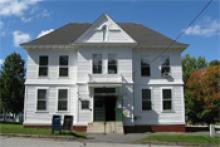In Massachusetts, Wired West Builds Momentum
The end of June brought an end to an initial phase of the Wired West campaign for real broadband in rural Massachusetts. When we previously looked in on the Wired West efforts, they had 39 towns supporting the idea.
By June 26th, that number had grown to 47.
The local paper outlined the overwhelming support and next steps.
Once the non-profit has been formed, financing options would have to be identified, and preliminary design and cost estimate work would start. None of the cost of the project would be borne by the towns, Webb said. Ongoing maintenance cost and debt service payments would come from money paid to the agency by the service providers, added Andrew Michael Cohill, president of Design Nine, a consultancy hired to help WiredWest through the next phase of development.A previous article discussed a cost estimate of the network and how much money residents send outside their community for service.
Monica Webb, a spokesperson for WiredWest, said that a consultant who met last year with representatives from Mount Washington and 10 other towns in southern Berkshire County estimated the cost of building a fiber-optic network for that region at $27 million. But, Webb said, the consultant calculated that the roughly 12,000 households in the region were already paying an average of $125 a month for Internet and other telecommunication services – an amount that adds up to $18 million a year that people “are putting in an envelope and sending outside of your region.”The most recent announcement relating to the project discusses how a recent federal broadband stimulus grant to the Massachusetts Broadband Institute will aid the Wired West network.
This will enable a robustmiddle-mile network to be built by the Massachusetts Broadband Institute (MBI) in Western and North-Central Massachusetts that will serve 123 communities.




